Snow Pea Garden Ideas: Easy Tips for a Bountiful Harvest
Growing snow peas in your garden can be a rewarding and tasty experience. These versatile plants are easy to grow and can add a crisp, sweet flavor to your meals. Whether you have a large backyard or just a small space, you can find a suitable method for growing snow peas.
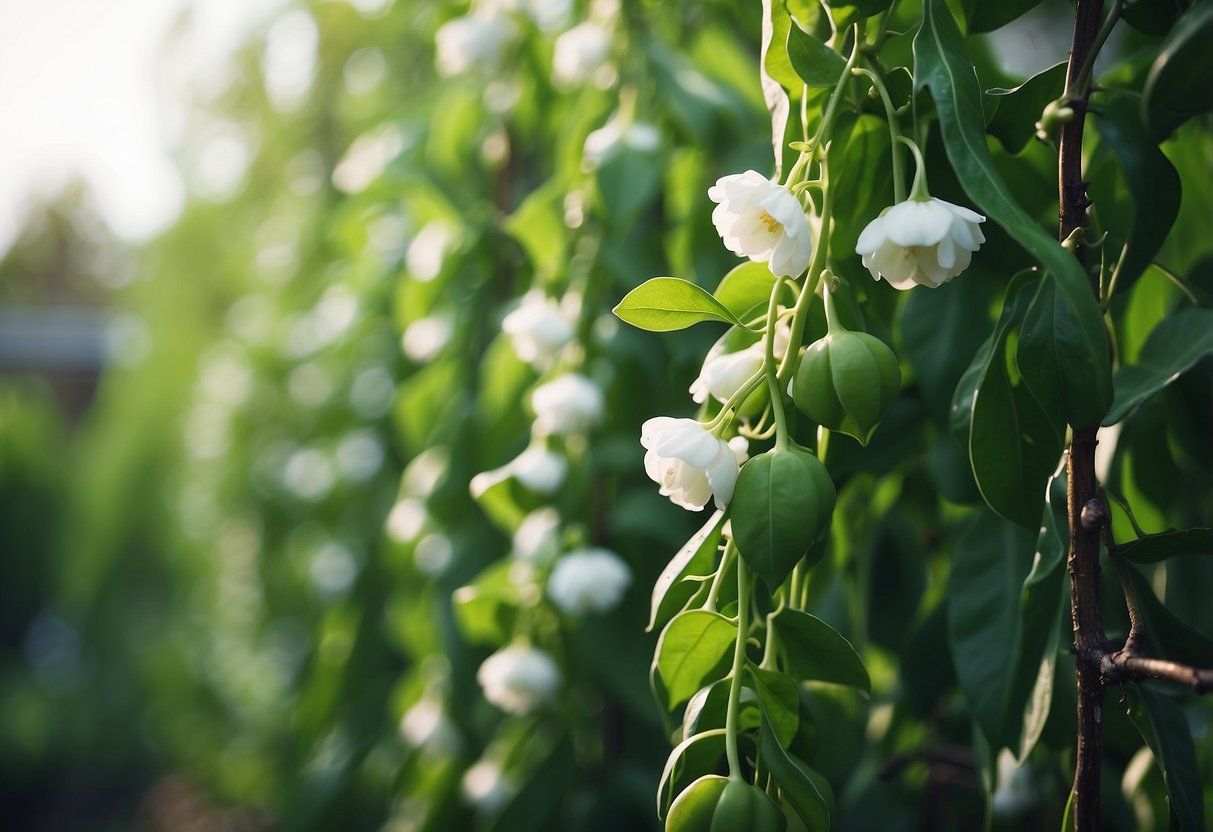
Are you looking for creative ways to support your snow peas in the garden? There are many simple and effective trellis ideas to help your plants thrive. By exploring different methods, you’ll be able to choose the best one for your gardening needs.
1) Raised Bed Designs

Raised beds make managing your snow pea garden easier. They provide better drainage and keep the soil loose.
You can design raised beds using materials like wood, bricks, or even cinder blocks.
To give your garden a natural look, try blending in plants such as sunflowers or zinnias. Consider adding small holly or boxwood to provide shelter for birds in the winter.
2) Trellis Supports

Using trellis supports for your snow peas helps them grow vertically. This keeps the plants healthier and makes harvesting easier.
Try a simple setup with bamboo posts and garden twine. Just place the bamboo stakes in the ground and tie the twine to create a grid for your peas to climb.
Another option is a hula hoop and garden stake trellis. This sturdy support system combines wood stakes and a circular frame, giving your snow peas plenty of space to grow.
For a rustic look, use classic twine and wood to build your trellis. This can add charm to your garden while supporting your plants. Learn more about making a rope and wood trellis.
3) Succession Planting Tips

To keep your garden producing all season, practice succession planting.
After harvesting your snow peas, plant fast-growing crops like radishes or leafy greens. This provides continued harvests without long gaps.
Consider planting summer vegetables like squash or zucchini after your peas. These grow quickly in warm soil and will keep your garden productive.
Stagger your plantings by sowing every 2-3 weeks. This ensures a constant supply of fresh vegetables.
Maintain even moisture and use row covers to help with germination. This improves your chances of successful growth.
4) Companion Planting Ideas
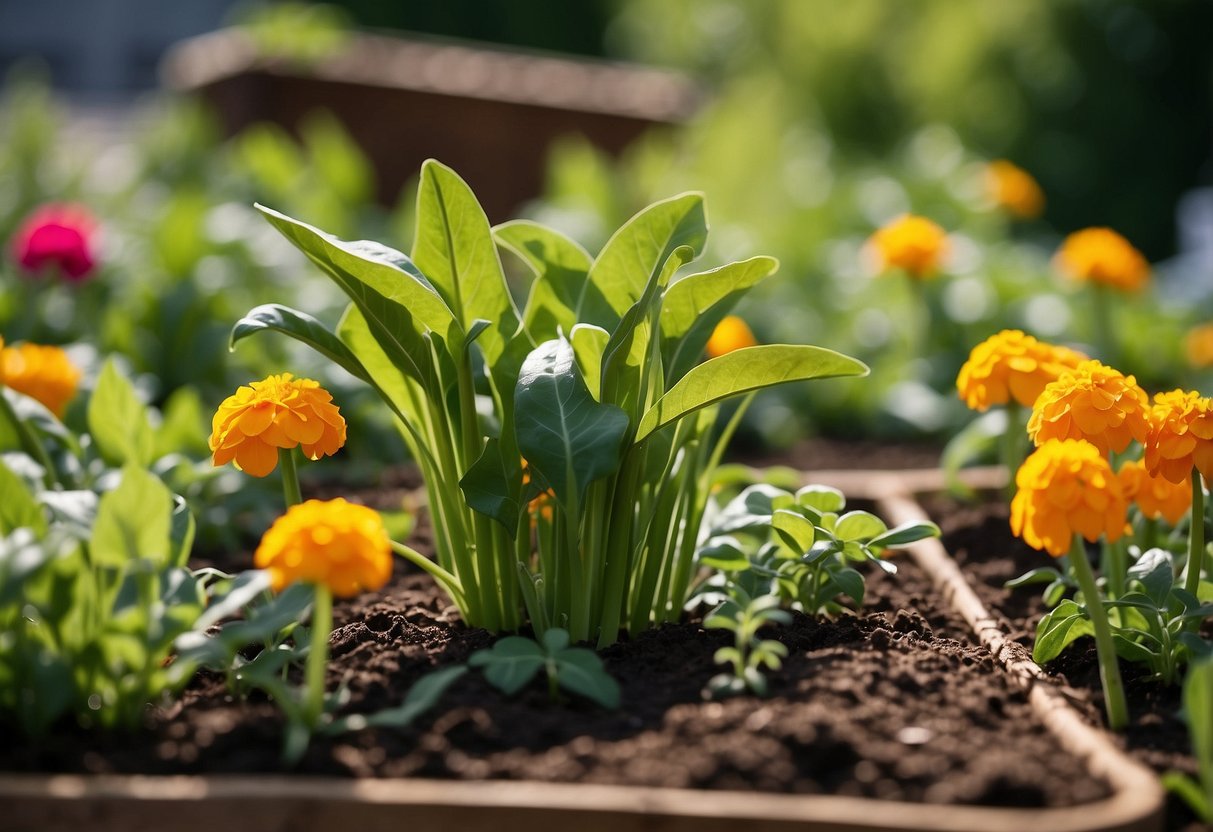
Snow peas grow well with carrots. Both enjoy cooler temperatures and moist soil. Carrots can grow beneath the peas, making the most of your garden space.
Radishes thrive around snow peas. They love the nitrogen that peas add to the soil, boosting their growth.
Consider planting corn alongside snow peas. Snow peas will climb the corn stalks, helping them grow taller while providing natural support.
Eggplants benefit from the nitrogen snow peas provide. This helps them grow stronger and healthier. Lettuce can also fill space beneath the pea plants, creating a more productive garden.
5) DIY Vertical Gardens
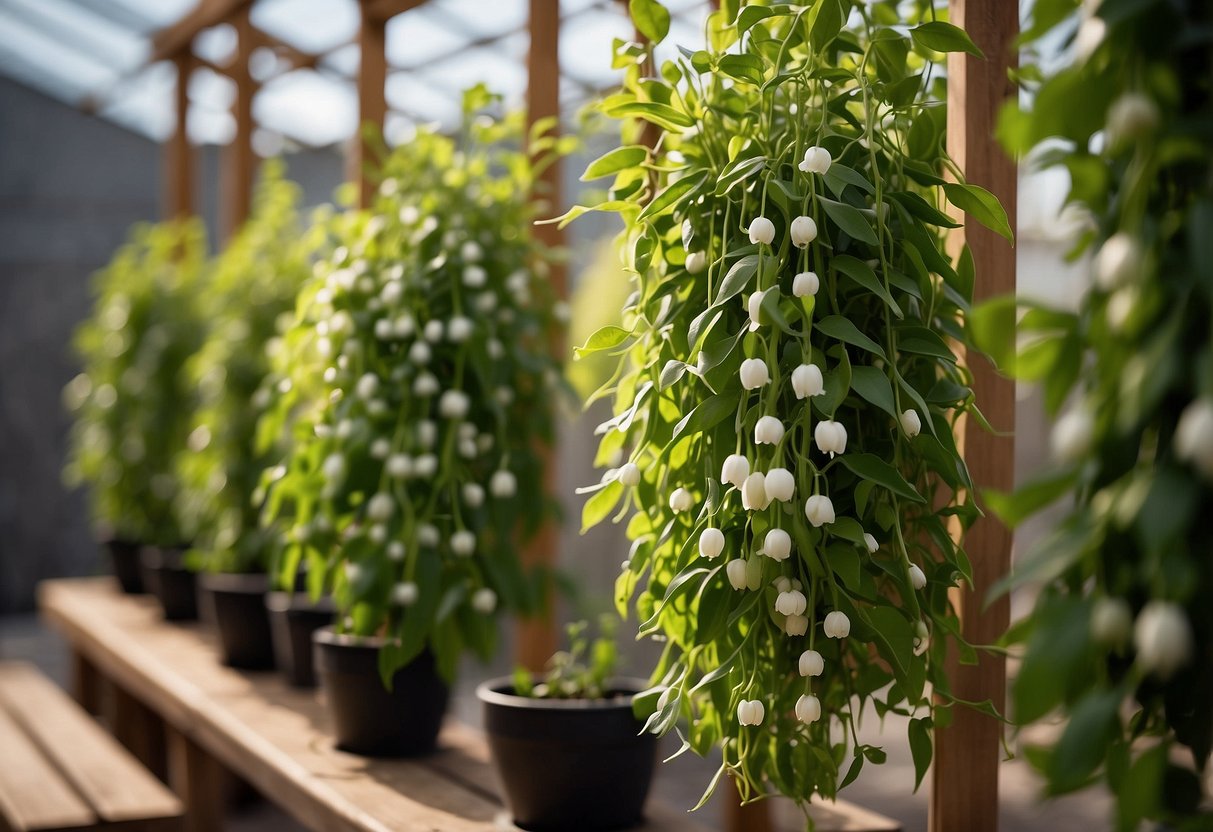
Vertical gardens are a great way to save space and grow snow peas. You can use wooden slat walls or trellis panels to support your plants.
Another idea is to create a vertical planter using chicken wire. Fill the wire frame with moss and plant your snow peas.
Hanging bottle planters work well too. Cut open the bottles, add soil, and place your pea plants inside. Secure the bottles with rope or twine for a unique garden look.
Try these fun and space-saving ways to grow your snow peas!
6) Snow Pea Maintenance Tips

Water your snow peas regularly to keep the soil evenly moist.
Mulch around the plants to help retain moisture and minimize weeds.
Use organic fertilizer to give your plants the nutrients they need.
Check for pests like aphids and remove them by spraying with soapy water.
Provide support for the vines with a trellis or stakes.
Harvest the pods when they are tender and flat for the best taste.
7) Harvesting Techniques
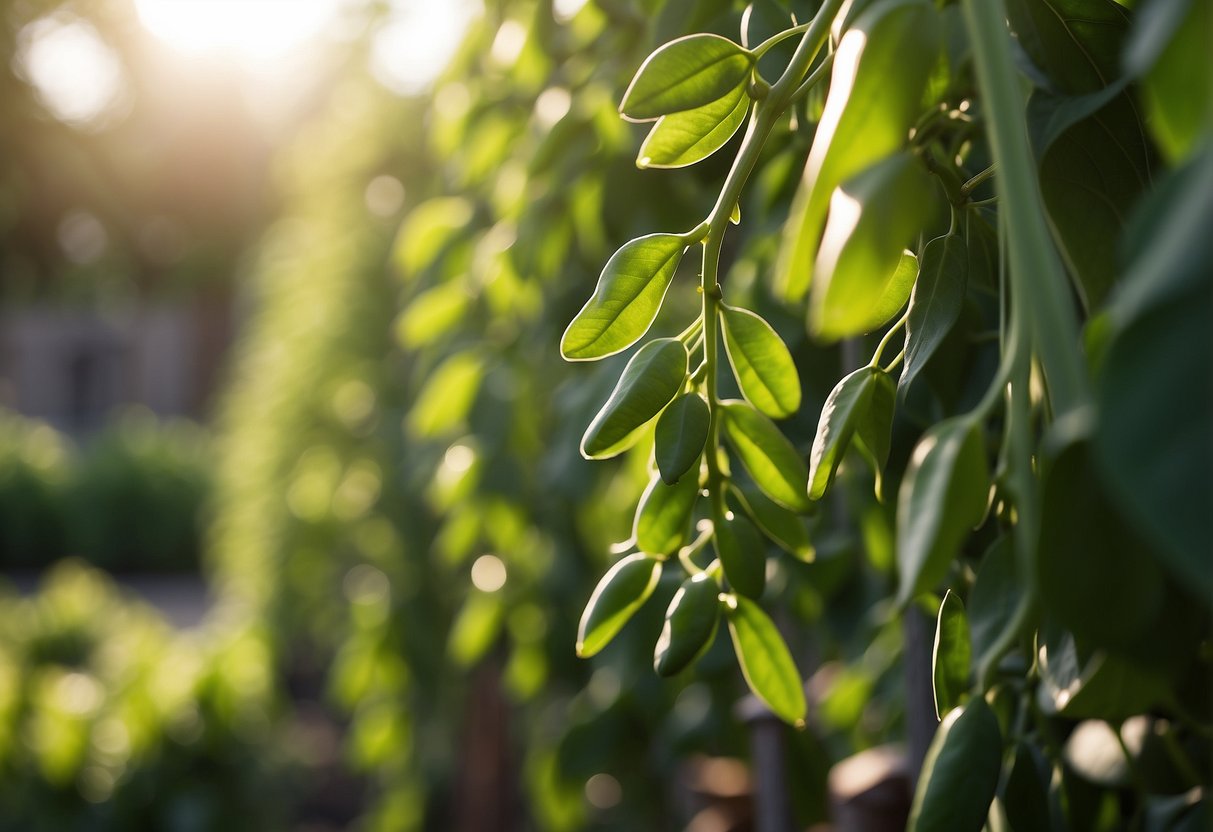
Snow peas are usually ready to harvest about 60 to 70 days after planting. The best time to pick them is when the pods are flat, sweet, and crisp. They should be about 2 inches long.
Check the pods each day during harvest time. The warmer the weather, the earlier they might be ready. Use your fingers to gently pinch off the pods to avoid damaging the plant. For more tips, take a look at How to Harvest Snow Peas – Urban Garden Gal.
8) Winter Preparation

Prune any dead branches, stems, or limbs off woody shrubs and trees to prepare the winter garden. This helps keep your garden tidy and gives wildlife sturdy perches.
Make sure your snow peas are protected. If temperatures drop too low, consider using row covers or mulch to insulate them.
Winter pea planting can be done in the fall. Ensure the soil is tilled and seeds are sown directly into rows. If you need more guidance, check out this comprehensive guide on winter peas.
Remember to keep an eye on weather forecasts to protect your plants from severe cold snaps.
9) Soil Enrichment Methods

Start with compost. Adding compost enriches your soil with vital nutrients, making it perfect for snow peas. Compost also helps improve soil texture, aiding in drainage and aeration.
You can also add organic matter like mulches or leaf mold. These materials break down over time, continuously feeding your soil.
Consider using natural fertilizers like bone meal or fish emulsion. These options provide essential nutrients without the harsh chemicals found in synthetic fertilizers.
10) Mulching Strategies
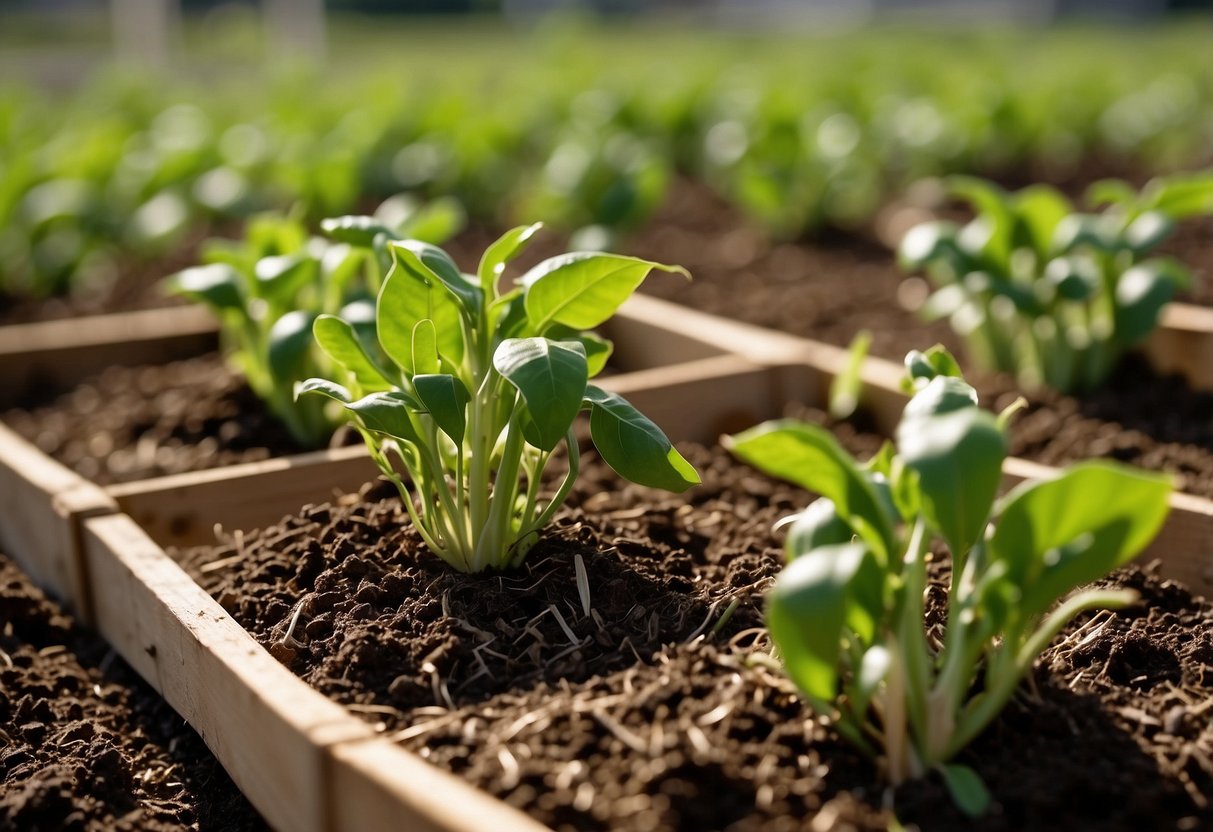
Mulching helps keep the soil moist and reduces weed growth. For snow peas, consider using straw or grass clippings as mulch. These materials are easy to find and spread around your plants.
You can also use chop-and-drop mulch. This means cutting green plants like comfrey and rhubarb and laying them around your snow peas. They will break down and enrich the soil.
Organic compost can also work well. It improves soil health and provides nutrients as it decomposes. Mulch keeps the roots cool and supports healthy growth.
Choosing the Right Snow Pea Variety

When choosing the right snow pea variety, think about the yield, growth habits, and climate preferences. Different varieties offer unique benefits that cater to specific gardening needs.
Popular Varieties to Consider
Some popular snow pea varieties include Mammoth Melting Sugar, Oregon Giant, and Little Snowpea White-Flowered.
-
Mammoth Melting Sugar: This variety is known for its large, tender pods. It grows on tall vines and needs a trellis for support. The sweet flavor makes it a favorite among gardeners.
-
Oregon Giant: This type stands out due to its disease resistance. The pods are thick and crunchy, ideal for fresh eating or cooking. It thrives in moderate climates.
-
Little Snowpea White-Flowered: Perfect for small spaces or containers, this variety has compact vines. Despite its small size, it yields a good amount of sweet, tender pods.
Factors to Keep in Mind
When choosing a snow pea variety, consider the climate of your area. Some varieties, like the Oregon Giant, are more resistant to diseases and cooler temperatures.
Think about the space available in your garden. If you have limited space, a compact variety like Little Snowpea White-Flowered might be the best choice.
Also, take into account the yield and flavor preferences. If you want larger harvests, the Mammoth Melting Sugar might be ideal with its tall vines and large pods.
Lastly, consider growth support. Tall varieties need structures like trellises for support, while shorter varieties do not.
Planting Snow Peas

Planting snow peas involves choosing the right time and preparing the soil properly for the best growth. Snow peas are easy to plant and care for, making them a great addition to your garden.
Best Time to Plant
Snow peas are a cool-season crop, which means they thrive in cooler temperatures. You should aim to plant your snow peas in early spring or late summer. For spring planting, sow the seeds as soon as the soil can be worked, which is usually around four to six weeks before the last expected frost. If you prefer a fall harvest, plant the seeds in late summer, about eight to ten weeks before the first expected frost.
Temperature plays a key role in germination. Snow pea seeds germinate best in soil temperatures between 40°F and 85°F. The seeds will germinate within 5 to 10 days if you keep the soil consistently moist. Plant snow peas every few weeks for a continuous harvest throughout the growing season.
Soil Preparation
Snow peas prefer well-draining soil with a pH level between 6.0 and 7.5. If your soil is heavy or clay-like, mix in organic matter like compost to improve drainage. This helps ensure that the roots do not sit in water, which can lead to rot.
Before planting, loosen the soil to a depth of about 8-10 inches. Remove any weeds or debris to give the young plants room to grow. Make furrows or rows for planting your seeds. Plant the seeds about 1 to 1 1/2 inches deep and space them 1 to 2 inches apart. Leave about 18 to 24 inches between rows to allow for air circulation and ease of access.
Water gently after planting to settle the soil around the seeds. Keep the soil evenly moist but not waterlogged as the seeds germinate and start to grow. Snow peas are relatively low-maintenance, making them an ideal choice for beginners and experienced gardeners alike.
Caring for Your Snow Pea Plants

Caring for snow pea plants involves ensuring they get enough water and nutrients, as well as providing support for their vines to grow properly.
Watering and Fertilizing
Snow peas need consistent watering to thrive. Aim to keep the soil evenly moist, especially during dry periods. Water deeply but gently, avoiding heavy sprays that can damage delicate plants. A simple nozzle attachment helps make watering more precise.
Fertilizing snow peas is also important. Use a balanced fertilizer or compost to enrich the soil. Snow peas benefit from organic matter, like compost, mixed into the soil at planting time. This helps improve drainage and provides nutrients. Avoid over-fertilizing since too much nitrogen can lead to more foliage and fewer peas.
Support and Trellis Ideas
Snow pea plants are climbers and need support as they grow. Using a trellis or other support can help them grow upward, keeping the plants healthy and making harvesting easier. You can use simple structures like bamboo poles, netting, or even string.
Arrange the support system before planting to avoid disturbing the roots later on. Space the supports 1-2 feet apart to give the vines plenty of room. Trellises should be 4-6 feet tall to allow for full growth. Training the vines to climb is easy; gently tie them with garden twine as they grow. This keeps the plants organized and ensures they get enough sunlight.







